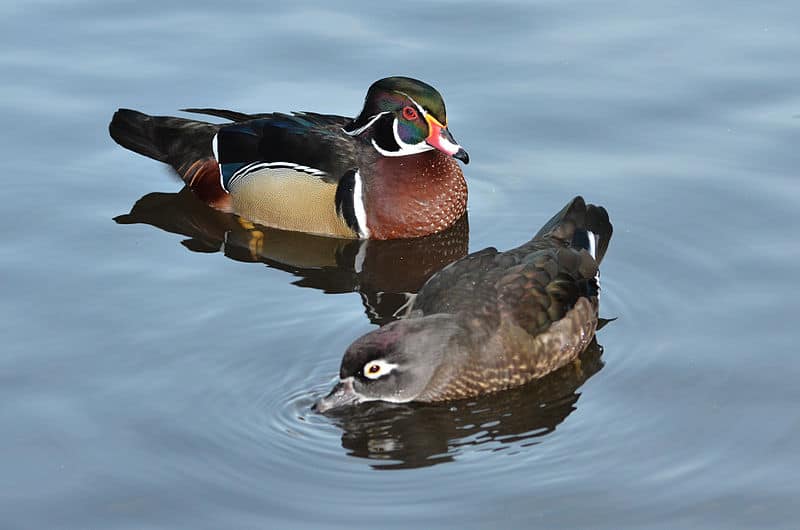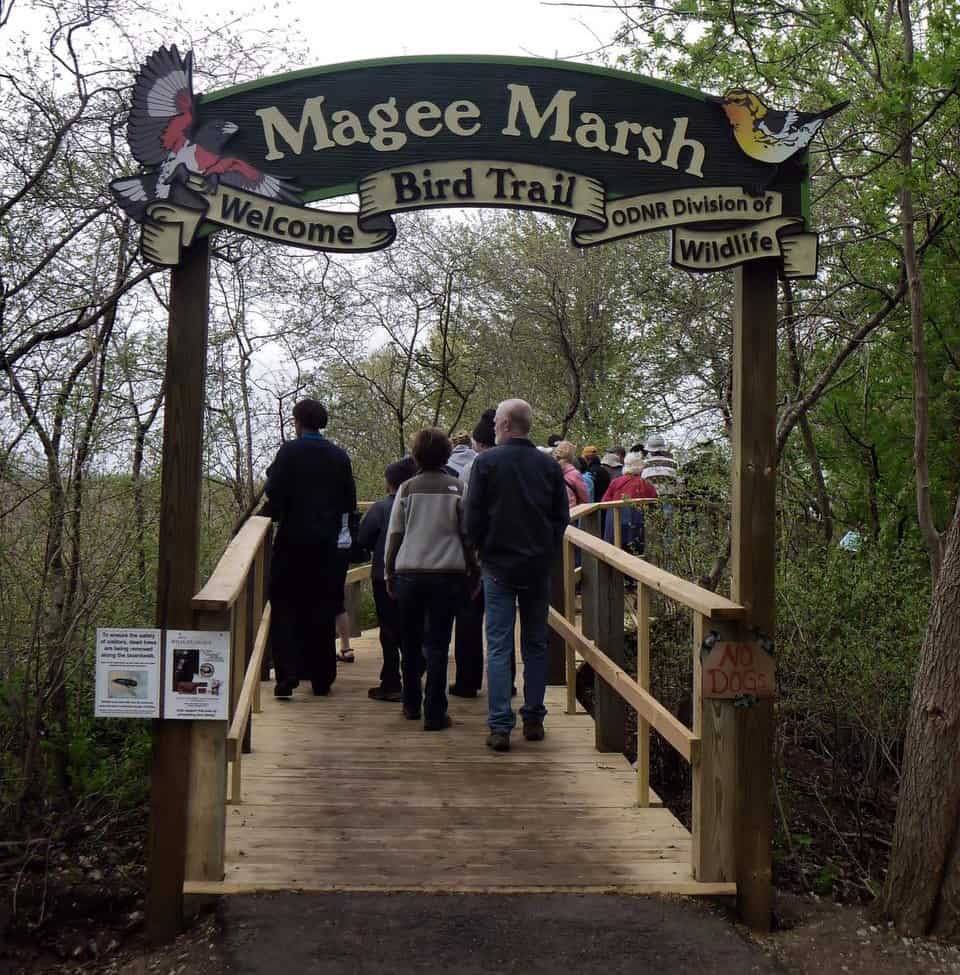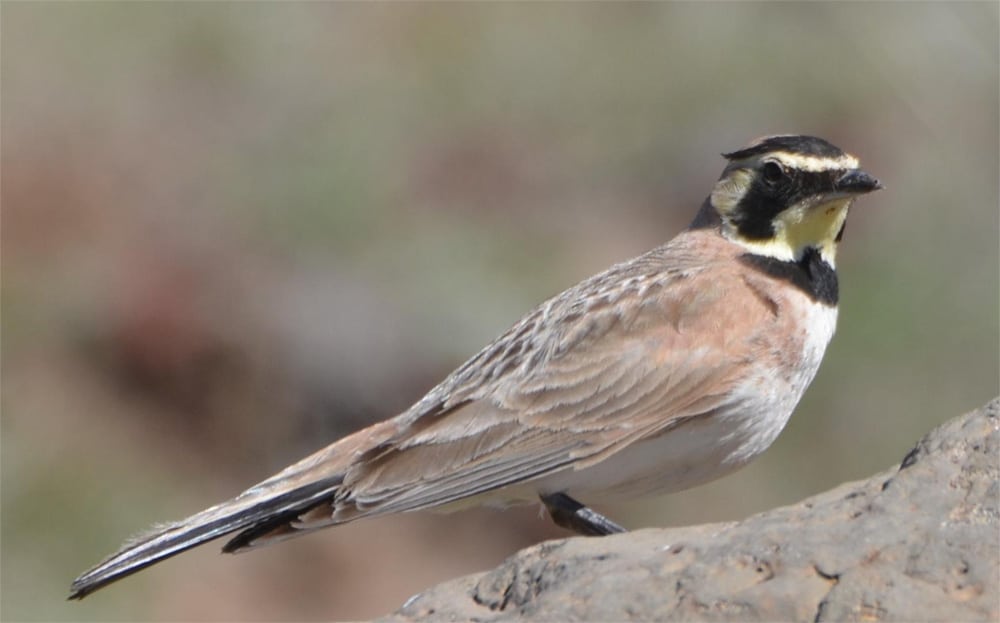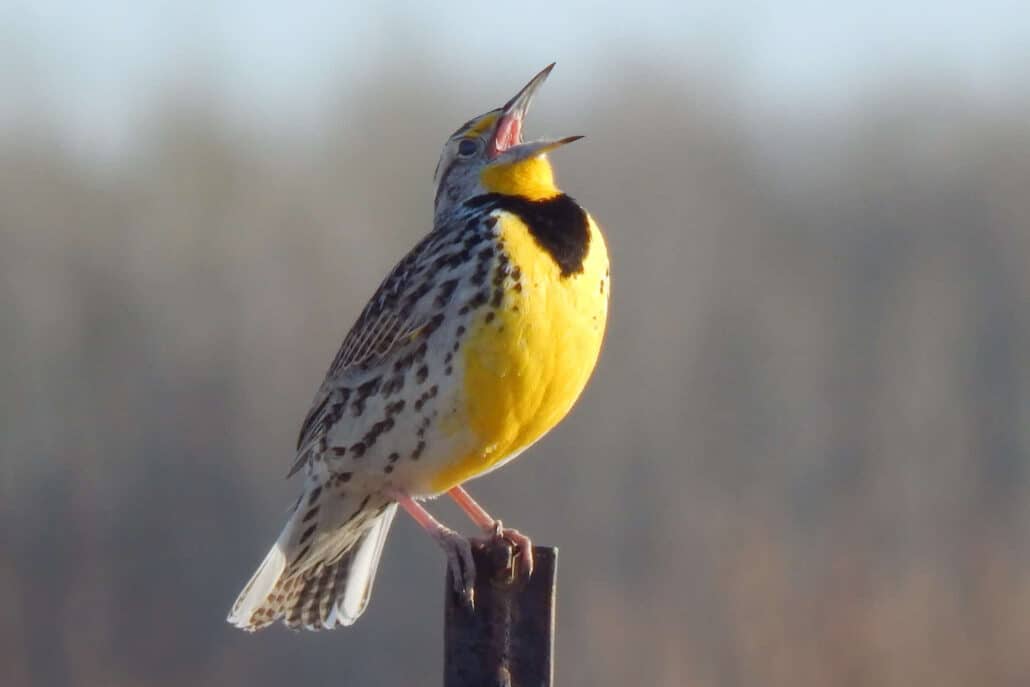Summer Birds of Iowa (June, July, August)
By the time summer officially begins in the third week of June, migration is over. The dawn chorus has faded. Territories have been won and defended against challengers, and most birds no longer find it necessary to make dramatic displays. Birds are still all around, breeding and nesting, but they can be inconspicuous to the point of sneakiness. The Baltimore oriole who sang gloriously through the spring now spends most of his energy quietly helping his mate to feed their young. Rose-breasted grosbeaks can nest in mature trees without ever being noticed by the people whose backyard they share. It’s a quiet time for birds and the birders who love them.
Nevertheless, summer offers a wonderful opportunity to begin learning to identify birds by their songs. Those voices of those who do continue to sing—such as cuckoos, cardinals, red-eyed vireos, indigo buntings, and song sparrows—are easy to single out, with little distraction from the multi-voiced background of other species’ songs. If you learn the summer singers, their songs will tune up your ears and become your reference standards, giving you a basis for comparison when you hear new birds in spring.
In town and city, chimney swifts fly rapidly above the rooftops and dive into chimneys, where they’re building nests. In the evening, watch and listen for common nighthawks, which lay their eggs on flat roofs, especially graveled ones. Nighthawks often fly around streetlights on a warm summer night, beeping nasally. The male nighthawk makes dramatic swoops, creating a vibratory boom when he pulls up at the end of the dive. Apparently females can’t resist the sound.
To some birds, human residential areas seem eminently agreeable. House wrens eagerly accept backyard birdhouses. House finches raise their young in hanging baskets. Chipping sparrows nest in conifer hedges. In many yards, birdbaths are the focal point of summer interest, attracting birds that could never be coaxed in close by birdseed. Catbirds, thrushes, and even sometimes even screech owls respond to the offer of a drink and bath, particularly if someone has arranged for water to drip enticingly.
Driving in agricultural regions, which is to say in most of Iowa, one may see barn swallows swooping low over pastures and ponds. On fenceposts alongside grassy fields, dickcissels sing their sizzling song, and the tiny grasshopper sparrow lisps its high-pitched call. Bobolinks are also conspicuous in fields, pastures, and hayfields, which have some of the characteristics of the vanished native prairie that was their natural habitat. Eastern and western meadowlarks nest on the ground in open areas. The easiest way by far to distinguish between them is by their songs.
Farmers place nest boxes on fence posts for eastern bluebirds. Tree swallows and black-capped chickadees are welcomed when they adopt boxes planned for bluebirds. Eastern kingbirds pose on fences, singing songs that sound like the sparking of electric wires. Hedgerows and shrubby fields harbor loggerhead shrikes and song sparrows. In late summer, when other birds have finished with nesting, American goldfinches build their nests and line them with the down of thistles.
Easily found summer residents of wooded parks include brown thrashers, gray catbirds, great crested flycatchers, rose-breasted grosbeaks, and indigo buntings. Here one can find five common species of nesting woodpeckers: downy, hairy, red-bellied, and red-headed woodpeckers, and northern flickers. In the heavily wooded northeast, pileated woodpeckers and yellow-bellied sapsuckers nest as well.
In the less wooded areas in the western part of Iowa, one can find birds from the prairies of the western plains. In the dry Loess Hills, western kingbird is common, and blue grosbeak is found occasionally. Orchard orioles are easier to find here than in eastern Iowa. Waubonsie Park, in Fremont County, is one of the most reliable spots in Iowa to find chuck-will’s-widow.
Summer brings extreme heat, humidity, and thunderstorms to Iowa. It’s pleasant to go where water is—lake, stream, farm pond, river, wetlands—and those are good places to find birds, too. Wherever a farm pond or damp roadside ditch has not been scrubbed to sterility by mowing or herbicides, male red-winged blackbirds stand guard on fenceposts or nearby trees, while the modestly brown-streaked females attends to eggs or nestlings, and common yellowthroats sing witchety-witchety from the willows.
Many Iowa birds nest in the wetlands of the prairie pothole region. Marshes like Union Slough, in Kossuth County, produce tens of thousands of wood ducks, ruddy ducks, redheads, and northern pintails. Soras and Virginia rails benefit from wetlands managed for waterfowl production, as well as black terns, gray partridges, Savannah and swamp sparrows, and yellow-headed blackbirds.
It’s still summer when water birds’ southward migrations begin. Shorebirds assemble at areas of shallow water and mudflats, such as at Riverton Wildlife Area in Fremont County and Runnells Wildlife Area in Warren County. American white pelicans appear by the hundreds or thousands at the major reservoirs, beginning in July and August.
For sheer summer magic, nothing beats a river. Even though most of Iowa is agriculture, even though roads pretty much divide the state into a one-mile grid, the interior rivers are still wild. From a canoe or a jonboat midstream on an Iowa river such as the Wapsipincon or the Skunk, for long stretches one sees nothing but water, sky, trees, and abundant birds and wildlife. Even in the heat of a midsummer day, warbling vireos, song sparrows, indigo buntings, and perhaps a northern parula sing from the trees along the river. Long after the orioles have become elusive and invisible in town, they still dart across the water in their luminous gold-and-black plumage. Bank swallows flash from their nest holes in earth banks. Cedar waxwings swoop from the trees to snatch insects from the air. A cormorant may surface near the boat and swim alongside for a while, then disappear again into shady water. The view is much as it must have been on a summer day 150 years ago.




